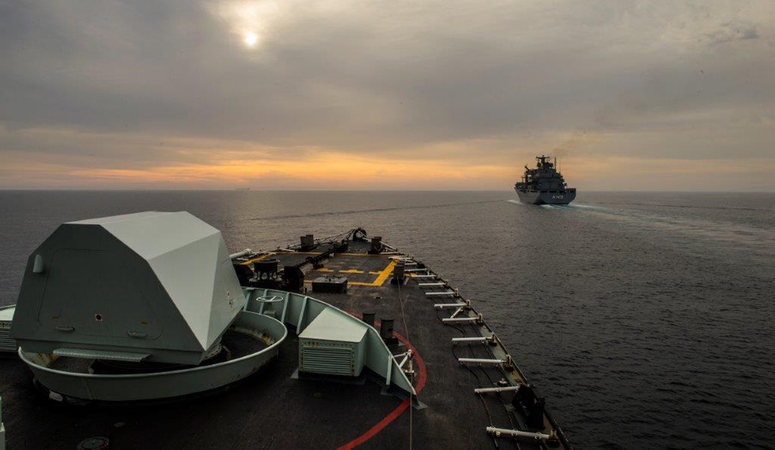Assistance for the refugee and migrant crisis in the Aegean Sea
As Europe continues to face one of the greatest refugee and migrant crises since the end of the Second World War, NATO is providing support to assist with the consequences of this humanitarian crisis.

- The refugee and migrant crisis, caused by conflict and instability on NATO's southern borders, is being fuelled by human trafficking and criminal networks.
- In February 2016, on the request of Germany, Greece and Türkiye, NATO decided to join international efforts in dealing with this crisis.
- NATO is contributing to international efforts to stem illegal trafficking and illegal migration in the Aegean Sea through intelligence, surveillance and reconnaissance.
- To this end, NATO is cooperating with the European Union's border management agency Frontex, in full compliance with international law and the law of the sea.
NATO’s role and contribution
Following a request from Germany, Greece and Türkiye, NATO defence ministers decided on 11 February 2016 to assist with the growing refugee and migrant crisis in Europe. NATO has deployed a maritime force in the Aegean Sea to conduct reconnaissance, monitoring and surveillance of illegal crossings, in support of Turkish and Greek authorities and the EU’s Frontex agency.
NATO maritime forces are deployed in the Aegean Sea to contribute critical, real-time information to Greece and Türkiye, as well as to Frontex, in light of the ongoing humanitarian crisis.
NATO's Standing NATO Maritime Group 2 (SNMG2) is conducting reconnaissance, monitoring and surveillance of illegal crossings in the territorial waters of Greece and Türkiye, as well as in international waters with its maritime and air assets. It is sharing whatever relevant information it finds with the Greek and Turkish coast guards and authorities. NATO is also sharing this information with Frontex so that it can take even more effective action. Since NATO’s ships are larger than Frontex vessels, NATO sensors and radars have a broader reach and complement Frontex assets.
The purpose of NATO’s deployment is to assist Allies and Frontex in carrying out their duties in the face of the crisis. In accordance with international law, all ships that sail, including NATO ships, have to rescue people in distress at sea. Allied vessels will live up to their national responsibility to assist.
Composition and command of the deployments
The activity has been performed using part of the SNMG2 assets, significantly reinforced by additional ships provided by NATO Allies. On average, there have been around five ships involved in the Aegean.
SNMG2 is one of two Standing NATO Maritime Groups – SNMG1 and SNMG2. SNMGs fall under the authority of Allied Maritime Command (MARCOM), Northwood, United Kingdom. These are multinational, integrated maritime forces made up of vessels from various Allied countries. These vessels are permanently available to NATO to perform different tasks ranging from exercises to operational missions. They function according to the operational needs of the Alliance, therefore helping to maintain optimal flexibility. Their composition varies and they are usually composed of between two and six ships from as many NATO member countries.
NATO-EU cooperation
NATO has established arrangements enabling direct links with Frontex at the operational and tactical levels. This allows the exchange of liaison officers and the sharing of information so that Frontex can take even more effective action. The NATO Secretary General has held discussions on the refugee and migrant crisis with several EU counterparts.
